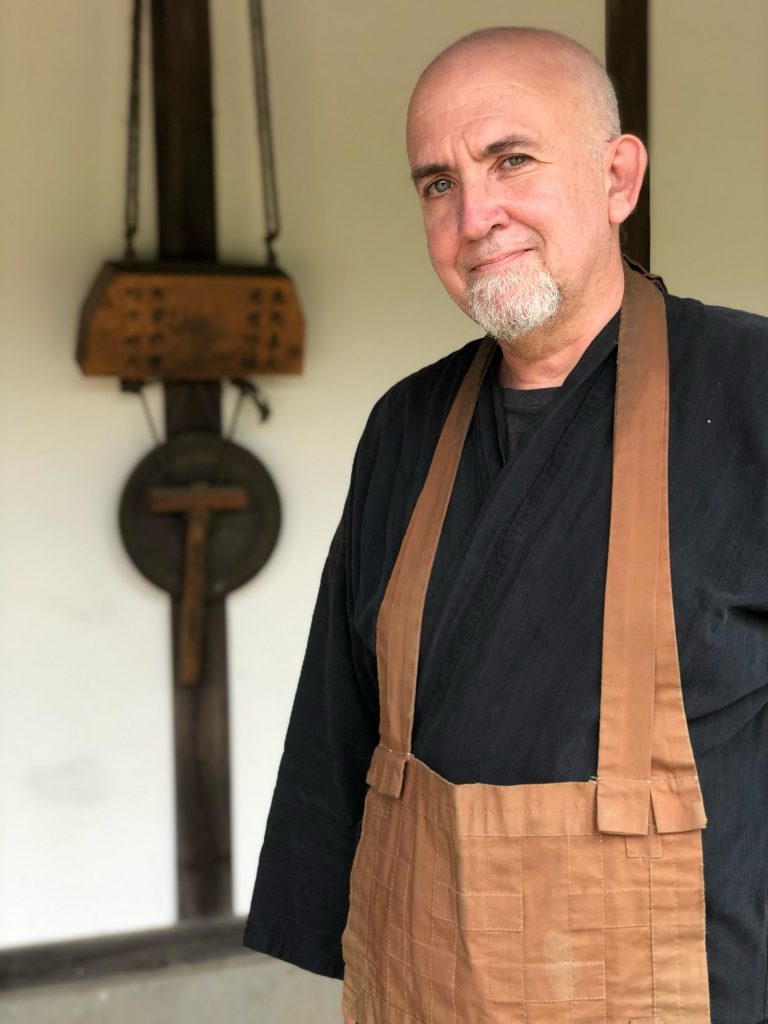The Sōtō Zen Lineage: A Continuing History
The history of Zen Buddhism often presents itself as a family saga. Each priest of the Sōtō school today belongs to a line which traces itself either to Gasan Jōseki Zenji (1276-1366) or to Meihō Sotetsu Zenji (1277-1350), two disciples of Keizan Zenji, all other Japanese lines having since become extinct. One is integrated into a lineage at the time of the ceremony of Transmission of the Dharma, by which the Master makes the Disciple his successor. Presented here is the chain of teachers that connects Eihei Dōgen Zenji to Gudō Wafu Nishijima Roshi, and in the 41st generation from Dōgen, Jundo Cohen of Treeleaf Zendo.
Its links are said to reach back in time through China and India, on to the historical Buddha, Śākyamuni. The line is also closely associated, ever since the 15th century, with the temple Tōkei’in, located near the Japanese town of Shizuoka. It is a long, yet continuing history. In an important sense, it is not to be limited to any place or nation, nor is it merely a timeline which flows from past to present: In Dōgen’s teachings, past is present is future, while the future flows into the past as the past becomes the future. In this way, each teacher stands for all others, and all are with us now.
References: For a history of the development of Zen in Japan, please refer to William Bodiford, Sōtō Zen in Medieval Japan, Honolulu, University of Hawaii Press, 1993, as well as Heinrich Dumoulin, Zen Buddhism: A History, Volume 2 – Japan, New York, Macmillan Publishing Company, 1990. The following is a translation of the original French version by Eric Rommeluère, Dharma Heir of Nishijima Roshi and Dharma Brother to Jundo, founder of the “Un Zen Occidental” Sangha in Paris.
1. Eihei Dōgen (1200-1253)
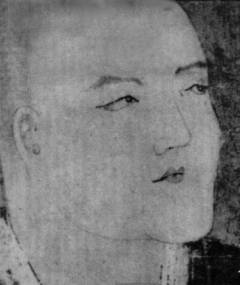
The Zen of the Japanese Sōtō school begins from him. Born in 1200 into the highest Japanese aristocracy, Dōgen entered adolescence as a novice priest at Mount Hiei, the principal monastery of the Tendai school. He left to study with Master Ryōnen Myōzen (1184-1225) at Kenninji, where he was initiated into Zen.
With Myōzen, he traveled to China in 1224. Remaining there for three years, he accepted transmission from Master Rujing (1163-1228, jap. Nyojō).
On his return, he first remained close to Kyoto, where he established the initially specifically Zen monastery in Japan, Kōshōji. In 1243, Dōgen left Kyoto with his disciples for the province of Echizen (the current Fukui Prefecture) where he build the monastery of Daibutsuji, renamed thereafter Eiheiji, and still one of the two head temples of Japanese Sōtō Zen Buddhism. He is the author of any number of works important to the Sōtō school and the Zen world, including the Shōbōgenzō (“Dharma Treasury of the True Eye.”) Dōgen died in 1253.
2. Koun Ejō (1198-1280)
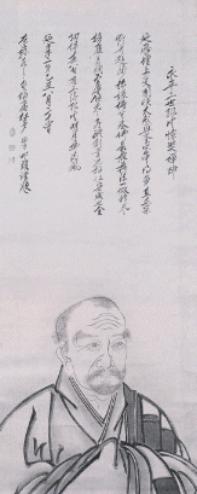
A member of the Fujiwara clan. Ejō belonged to the Zen school of Dainichi Nōnin (known as the Daruma-shū) prior to eventually joining Dōgen at his monastery of Kōshōji in 1234. A faithful disciple, Ejō was appointed as chief monk of Kōshōji in 1236, and assisted Dōgen in the compilation of his Shōbōgenzō. Ejō succeeded Dōgen as second abbot of Eiheiji. The last years of his life were marked, however, by what is known as the “Third Generation Controversy,” which arose between Gikai, his successor, and other members of the school.
After having given up his role as abbot, Ejō had to finally take it up again after the rather forced departure as abbot of Gikai. Ejō is the author of the “Samâdhi of the Treasury of the Radiant Light” (Kōmyōzō Zanmai, 1278). We also owe to him the “Record of Things Heard from the Shōbōgenzō” (Shōbōgenzō Zuimonki), a compilation of extemporaneous talks by Dōgen, composed at the end of the years 1230, and always regarded as a “readable” introduction to the thought of the Master.
3. Tettsū Gikai (1219-1309)
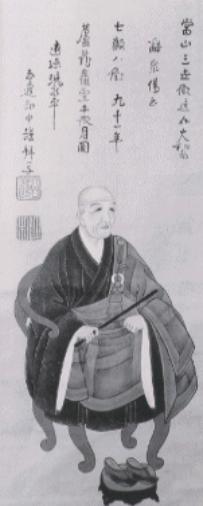
Born to a branch of the Fujiwara clan in the province of Echizen, Gikai was originally one of the disciples of Ekan of the Daruma-shū school. When that school was persecuted, Ekan and several of his disciples, including Gikai, joined Dōgen’s community at Kōshōji. Later, at Eiheiji, he occupied the key monastic role of temple cook (jap. tenzo), and there received transmission from Ekan in 1251. After the death of Dōgen, Ejō conferred his own transmission on Gikai in 1255. Gikai may have then traveled for a few years, including to China.
On his return to Eiheiji, he erected new buildings and introduced new rituals. In 1267, Gikai succeeded Ejō as third abbot, but a conflict emerged with his fellows concerning his duel lineage. Finally, Gikai was forced to depart after five years spent as the head of Eiheiji. He lived many years thereafter with his mother, in a hermitage not far from Eiheiji. Later, he converted a monastery of the Shingon school into a Zen monastery, Daijōji, which was officially opened in 1293.
4. Keizan Jōkin (1264-1325)
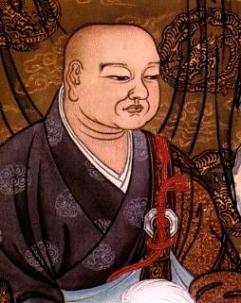
In 1271, Keizan accepted the tonsure from Gikai, then became for some time his personal attendant at Eiheiji. But it is only at the end of various travels, at the age of thirty-two, that Keizan finally joined Gikai at Daijōji. In 1295, Keizan received the transmission and the robe (jap. kesa) of Dōgen previously presented by Ejō to Gikai.
Three years after, Keizan succeeded Gikai as abbot of Daijōji. Thereafter, he established the monastery of Yōkōji on the Noto peninsula, where he settled in 1317. This monastery would remain the principal monastery of the immediate disciples of Keizan.
He also established the monastery of Sōjiji in 1324, which would later go on to become, with Dōgen’s Eiheiji, one of the two head temples of the Sōtō school. Keizan is the author of several works, in particular, The Three Kinds of Zen Practitioner” (Sankon Zazen Setsu), “Points to be Observed in Zazen” (Zazen Yōjinki), “The Collection of the Transmission of the Light” (Denkōroku), a series of sermons in the style of the collections of the Chinese lamp, such as “The Pure Rules of Tōkokuji,” better known under the title “The Pure Rules of Keizan” (Keizan Shingi).
5. Gasan Jōseki (1276-1366)
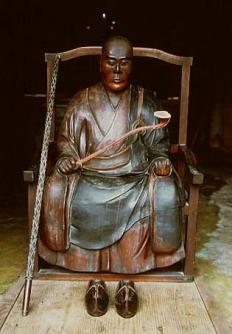
A son of the Minamoto family, with origins in the province of Noto (the present Ishikawa Prefecture). Gasan began his Buddhist studies within the Tendai school then, after a meeting with Keizan in Kyoto, joined with Keizan at the monastery of Daijōji, where he became one of Keizan’s principal disciples.
He was later the second abbot of Sōjiji, which he directed over a period of forty years, and was briefly the fourth abbot of Yōkōji. Gasan was the first master in Japan to make study of the dialectical system of the “Five Degrees” (jap. goi) of Chinese Master Dongshan Liangjie (jap. Tōzan Ryōkai, 807-869), founder and namesake of the Sōtō school. Of the six principal disciples of Keizan, only Meihō Sotetsu (1277-1350) and Gasan Jōseki have played a part in determining the later development of the school. Gasan had twenty-five successors, including five that he described as particularly “sensible.”
A famous dialogue between Keizan and Gasan has been preserved. One night, as they contemplated the starry sky. Keizan asked of Gasan: “Do you know that there are two moons?” At that time, Gasan failed to understand. Keizan responded, “If you do not know that there are two moons, you cannot be a bud in the Sōtō line.” Gasan went on to practice most intently. When the time was ripe, Keizan sent him to study with other Masters, in particular with Kyōō Unryō, a Rinzai Master. On Gasan’s return, he replied to Keizan, “We must inherit this mind that is as beautiful as the moon.” Keizan Zenji heard that reply and recognized Gasan Zenji as his successor,“Now you can finally be a bud in the Sōtō line.”
6. Taigen Sōshin (died in 1371)
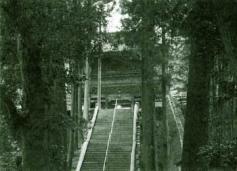
Born in the province of Kaga (in the present prefecture of Ishikawa). After having received ordination at a temple which remains unspecified, he went on to Sōjiji, where he studied under the direction of Gasan.
Taigen accepted Zen transmission from Gasan in the 5th year of the Jōwa era (1349). Immediately after the death of Gasan, Taigen became the 3rd abbot of Sōjiji then, at the end of his life, the 13th abbot of Yōkōji. He also founded the monastery of Butsudaji (in the province of Kaga). Taigen died in the 4th year of the Oan era (1371). His teaching was inspired, like Gasan, by the dialectic of the “Five Degrees.”
7. Baisan Mompon (died in 1417)
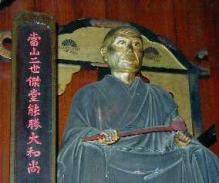
One of the most important figures of the Sōtō school at the end of the 14th century. A native of Mino Province (in the current prefecture of Gifu), Baisan took the priestly vows at Genjiji, a monastery of the Vinaya school of Buddhism. He later studied Zen at Sōjiji and succeeded as heir to Taigen Sōshin.
In 1382, Baisan became the abbot‐founder (jap. kaisan) of a monastery in the province of Echizen (in the current prefecture of Fukui), in fact an old temple which he renamed Ryūtakuji. He also founded the temple of Kongōji and was the abbot of Butsudaji. Baisan was appointed in 1390 as the eleventh abbot of Sōjiji, and founded in this monastery, with the heirs to Gasan, a system of abbacy rotation. Under this system, abbots of Sōjiji were to be alternatively selected from among the principal lines originating from Gasan. Baisan died in the 24th year of the Ōei era [1417].
Baisan is the subject of various miraculous anecdotes. In one, Baisan is said to have once taken refuge in a deserted house, lost in the countryside, to spend the night there. But the owner of the place returned in the middle of the night, dead drunk, and took the monk for a robber, unsheathed his saber and sliced sharply the intruder. The next morning, the householder awoke and was taken with remorse when he saw, to his great surprise, Baisan calmly seated in meditation. The man exclaimed: “How is this possible?” but Baisan did not answer, being satisfied to remove from his sleeves a small statuette of Kannon which he always carried with him. The statuette was sliced into two. The man prostrated and became – as one might expect – the disciple of Baisan.
Baisan is said to have had a particularly strong devotion to meditation. In the monastic code that he wrote in 1415 for his monastery Ryūtakuji, he enjoined its monks to meditate twenty‐four hours out of twenty‐four, if they did not have anything else to do!
8. Jochū Tengin (1365-1437)
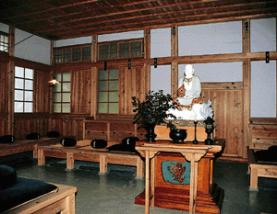
A native of the province of Shinano (in the current prefecture of Nagano), his family surname was Mino. Tengin studied with the Rinzai Master Daisetsu Sonō, from whom he accepted ordination, then later with Baisan Mompon from whom he received transmission.
Thereafter, Tengin went on to the province of Omi (in the current prefecture of Shiga) where he built a hermitage of the name Tōshun’in, that he soon renamed Tōju’an. A lord of the province of Tōtōmi (in the current prefecture of Shizuoka) named Yamauchi then requested him to build a temple at which the lord could make prayers. In 1401, Tengin gave up all his other activities and went in search of a favorable location. He found the place guided, according to legend, by the Bodhisattva Kannon. There, he built a temple that he later named Daitō’in, inaugurated in 1411. Tengin made his own Master, Baisan Mompon, the honorary founder of the temple, with Tengin himself becoming officially the second abbot. The shogun Ashikaga Yoshimochi offered neighboring lands in donation.
Once the monastery was completed, legend goes, the kami of the mountain came during the night into the apartments of Tengin in order to receive from him the Zen precepts. These were granted, and in thanks the kami promised Tengin to create a mineral spring not far from there. The next morning, there occurred a light earthquake and water spouted out of the mountainside, flowing even today …
In 1430, Tengin took over as the Abbot of Ryūkā’in in the province of Echizen (in the current prefecture of Fukui), where Tengin remained three years before returning to Tōju’in. He died in the 12th year of the Eikyō era (1440) at the age of 75 years. Before dying, Tengin required of his disciples that his funeral would remain simple and that, in the place of ceremonies, they would all assemble to sit in meditation. Of the 17,549 current temples of the Sōtō school, more than 3.200 trace their line to Jochū Tengin.
9. Sekisō Enchū (death in 1455)
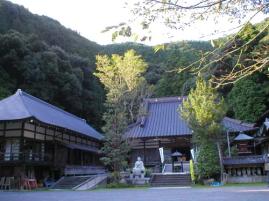
Second abbot of Tōkei’in. In 1452, via his brother, a vassal of Fukushima Iga No Kami, this last entrusted to Sekisō lands which were close to an old temple of Shingon Buddhism named Kikei’an, close to the current town of Shizuoka.
Sekisō renamed this the Tōkei’in and dedicated it to Zen. He named his late Master, Jochū Tengin, the abbot-founder (jap. kaisan) of the temple, with himself officially becoming its second abbot.
10. Taigan Sōbai (death in 1502)
Third abbot of Tōkei’in, who built the entirety of its buildings at the request of his Master. Three of his disciples followed one another as head of Tōkei’in: Kensō Jōshun, Gyōshi Shōjun and Efu Keimon, who were respectively the fourth, fifth and sixth abbots. The abbacy was then assumed in turns until 1872, by each line originating from these three abbots, following the system of rotation in use in the Sōtō school.
11. Kensō Jōshun (death in 1507)
Fourth abbot of Tōkei’in. He assumed the position of abbot of Tōkei’in and Sōshinji. He also established the temple of Shinju’in in the old province of Suruga (the current prefecture of Shizuoka), and had two principal disciples, Toshun and Jisan.
12. Jisan [Var. Jisen] Eikun
Second abbot of Shinju’in. Abbot-founder of Gofuzan Yōmeiji (in the current prefecture of Nagano)
13. Daichū Reijō
Third abbot of Shinju’in. Abbot-founder in 1530 of Myōonji (in the current prefecture of Nagano), his tomb stone is found there.
14. Nan’ō Ryōkun
Abbot of Shinju’in
15. Daijū Ryūzon
Abbot of Shinju’in
16. Hōgan Zensatsu
Abbot of Shinju’in
17. Ryōzan Chōzen
Abbot of Shinju’in
18. Kisshū Genshō
Abbot of Shinju’in
19. Kigai Mon’ō
Abbot of Shinju’in
20. Kanshū Taisatsu
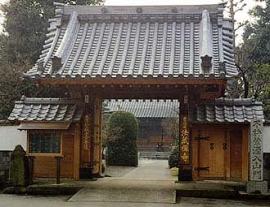
Abbot of Shinju’in. Originally from the temple of Eimeiji (in the prefecture of Nagano), he went on to Shinju’in and, in 1592, was invited to take the direction of an old temple of the Shingon school, Fuzō’in, in the old province of Suruga (the current prefecture of Shizuoka) which he renamed Bukkokuzan Hōzōji.
He became the abbot-founder (jap kaisan). Hōzōji was made a subordinate temple (jap. matsuji) of Shinju’in.
21. Tensō Juntetsu
Second abbot of Hōzōji
22. Kenkoku Keisatsu
Third abbot of Hōzōji
23. Raiten Gensatsu
Fourth abbot of Hōzōji
24. Kengan Zesatsu
Fifth abbot of Hōzōji
25. Hōkoku Satsuyū
Sixth abbot of Hōzōji
26. Rotei Shoshuku
Seventh abbot of Hōzōji
27. Fuhō Tatsuden
Eighth abbot of Hōzōji
28. Kachū Jakuchū
Ninth abbot of Hōzōji
29. Bunzan Kōrin
Tenth abbot of Hōzōji
30. Daichū Bunki [Daichū Getsuzan]
Eleventh abbot of Hōzōji.
31. Chōko Bungei
Twelfth abbot of Hōzōji.
32. Roshū Ezen
Thirteenth abbot of Hōzōji.
33. Reisai Emon
Fourteenth abbot of Hōzōji.
34. Tokuzui Tenrin
Fifteenth abbot of Hōzōji.
35. Shogaku Rinzui
Sixteenth abbot of Hōzōji.
36. Butsuzan Zuimyō (Masuda)
Seventeenth abbot of Hōzōji and fourth superior of the temple Tōkei’in (in the new system of classification post-Meiji).
37. Bukkan Myōkoku (Niwa, (1862-1904))
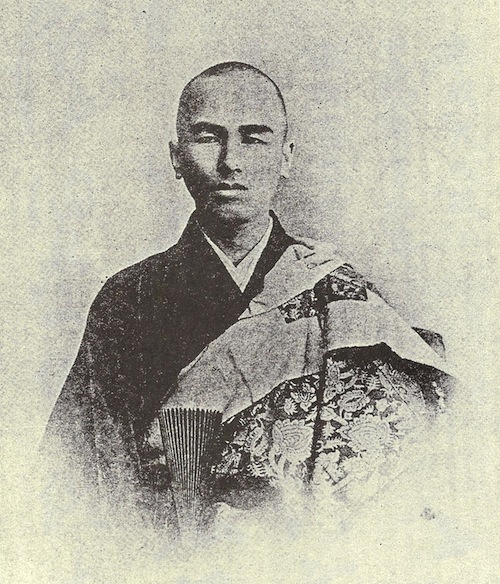
Became Third Abbot of Tōkei’in in 1896, where he cared for the development and rebuilding of the temple which, despite its prestigious past, had little money during the years of Buddhist persecution of the early Meiji Period.
Bukkan also planted more than six hundred plum trees in the fields nearby. For twelve years, he then served as personal attendant to Master Goyu Morita, the 64th abbot of Eiheiji. He was seen as himself a possible future head of the Soto Sect, but died young at age 42.
38. Butsuan Emyō (Niwa, 1880-1955)
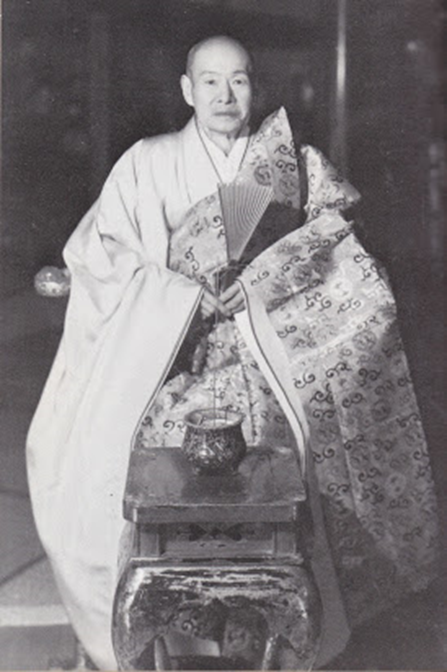
Fifth superior of Tōkei’in.
Niwa Butsuan was the fifth abbot of the Tōkei’in and the Executive Director (kan’in) of Eiheiji monastery. Together with his Heir, Zuigaku Rempō, Butsuan was a very influential figure in the development of “Baikaryu” hymn singing in the Soto Sect.
39. Zuigaku Rempō (Niwa, 1905-1993)
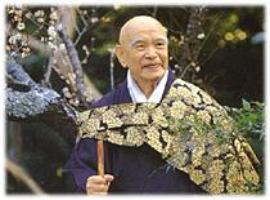
He succeeded Butsuan Emyō Niwa as superior of the Tōkei’in. After having assumed the station of vice-abbot, he became in 1985 the 77th abbot of the Eiheiji monastery, one of the two principal temples of the Sōtō school.
He then received the imperial title of Jikō Enkai Zenji (“Great Zen Master of Compassion, Ocean of Plenitude”). He died in September 1993 Tetsuzan Gendō Niwa succeeded him in 1986 as the abbot of Tōkei’in.
Zuigaku Rempō Niwa Zenji was noted for his brush calligraphy, and works by him can be found under various pen names, including Robai (“the old plum tree”) and Baian (“the plum tree hermitage”).
40. Gudō Wafu (Nishijma, 1919-2014)
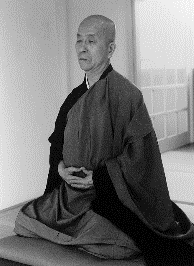
Born in November 1919, in October 1940, he took part in a first Sesshin at the temple of Daichūji under the direction of Master Zen Kōdō Sawaki (1888-1965).
In December 1973, he received ordination from Rempō Niwa, then transmission from Niwa Zenji in December 1977. He was the author of over thirty works in English and Japanese, and translated into many other languages.
He died in January, 2014. Nishijima Roshi taught “Life is just the fact in this moment; death is just the fact in this moment.”
41. Chigen Jundo Cohen (1960 – )
